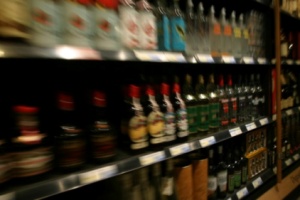 Source: Centers for Disease Control and Prevention (CDC) published Nov. 20, 2014
Source: Centers for Disease Control and Prevention (CDC) published Nov. 20, 2014
A CDC public health report by Marissa B. Esser, MPH; Sarra L. Hedden, PhD; Dafna Kanny, PhD; Robert D. Brewer, MD, MSPH; Joseph C. Gfroerer, BA; Timothy S. Naimi, MD, MPH
Excessive alcohol consumption is responsible for 88,000 deaths annually and cost the United States $223.5 billion in 2006. It is often assumed that most excessive drinkers are alcohol dependent. However, few studies have examined the prevalence of alcohol dependence among excessive drinkers. The objective of this study was to update prior estimates of the prevalence of alcohol dependence among US adult drinkers.
Data were analyzed from the 138,100 adults who responded to the National Survey on Drug Use and Health in 2009, 2010, or 2011. Drinking patterns (ie, past-year drinking, excessive drinking, and binge drinking) were assessed by sociodemographic characteristics and alcohol dependence (assessed through self-reported survey responses and defined as meeting ≥3 of 7 criteria for dependence in the Diagnostic and Statistical Manual of Mental Disorders, Fourth Edition).
Withdrawal, time spent
The alcohol dependence questions include tolerance, withdrawal, impaired control, unsuccessful attempts to cut down or stop drinking, continued use despite problems, neglect of activities, and time spent in alcohol-related activity.
Binge drinking for men was defined as a nonzero response to the following question in the core portion of the survey: “During the past 30 days, that is, since [DATEFILL], on how many days did you have 5 or more drinks on the same occasion?” Binge drinking for women was defined as a nonzero response to the following question in the noncore portion of the survey: “During the past 30 days, that is, since [DATEFILL], on how many days did you have 4 or more drinks on the same occasion?” Heavy drinking was defined as 8 or more drinks per week during the past 30 days for women or 15 or more drinks per week for men.
The prevalence of alcohol dependence increased significantly with the frequency of binge drinking in the past month, ranging from 4.3% among those who reported binge drinking 1 or 2 times in the past month to 29.8% among those who reported binge drinking 10 or more times in the past month.
Higher incomes, more binge drinking
Excessive drinking, binge drinking, and alcohol dependence were most common among men and those aged 18 to 24. Binge drinking was most common among those with annual family incomes of $75,000 or more, whereas alcohol dependence was most common among those with annual family incomes of less than $25,000.
The prevalence of alcohol dependence was 10.2% among excessive drinkers, 10.5% among binge drinkers, and 1.3% among non-binge drinkers. A positive relationship was found between alcohol dependence and binge drinking frequency.
Most excessive drinkers (90%) did not meet the criteria for alcohol dependence. A comprehensive approach to reducing excessive drinking that emphasizes evidence-based policy strategies and clinical preventive services could have an impact on reducing excessive drinking in addition to focusing on the implementation of addiction treatment services.

Recent Comments
In addition to the personal hardship and loss...
No one will know the answer to this...
Bad drivers don't have to ruin your day...
Healthcare workers face a number of serious safety...
In my experience, truck drivers are treated with...